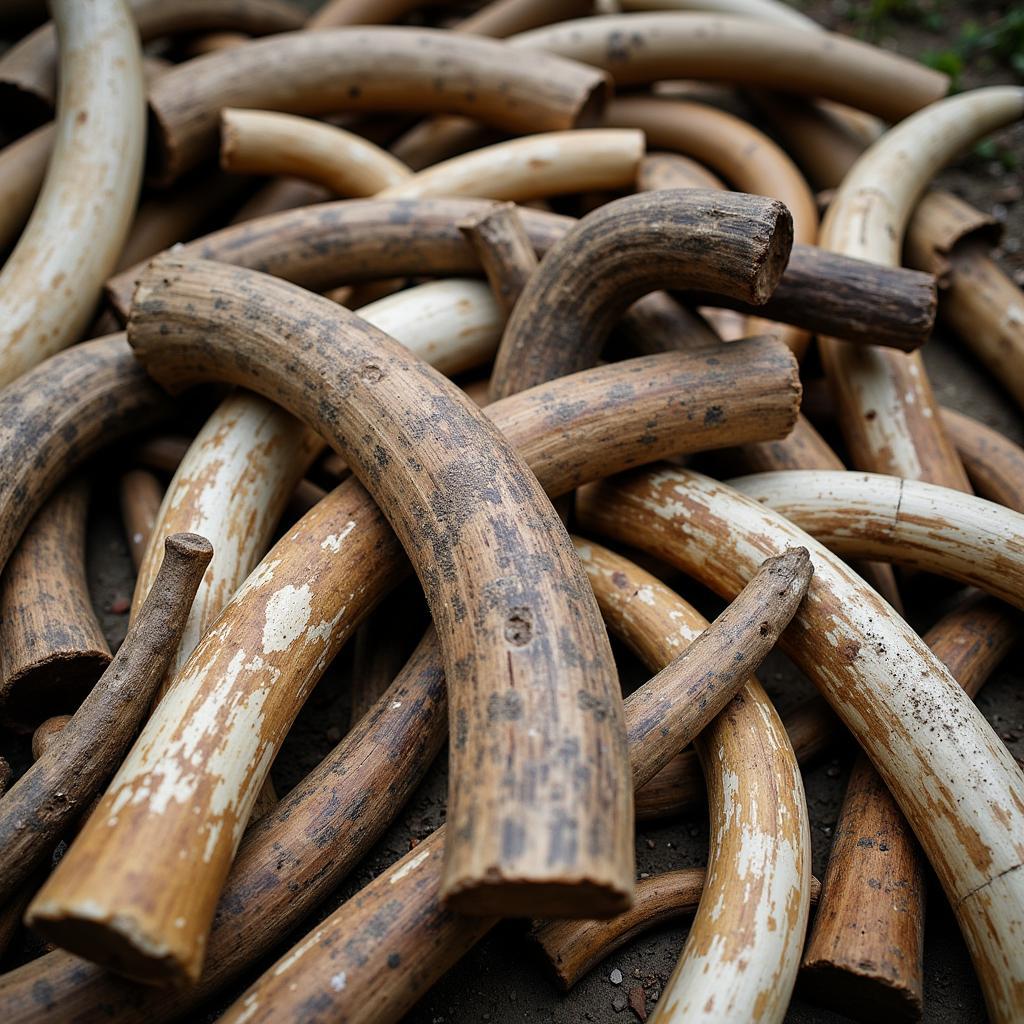African Forest Elephant Endangered: A Silent Crisis in the Congo Basin
The African forest elephant, a smaller, more elusive cousin of the African savanna elephant, is facing a dire situation: it is critically endangered. The shrinking forests of Central Africa, coupled with persistent poaching, paint a bleak picture for the future of this magnificent creature. We must understand the threats and act now to prevent its extinction.
The African forest elephant plays a vital role in the ecosystem of the Congo Basin. These gentle giants act as gardeners of the forest, dispersing seeds and creating pathways that allow sunlight to penetrate the dense canopy. Their presence is essential for the health and biodiversity of this crucial ecosystem. Learn more about the comparisons between African and Indian elephants at this african elephant and indian elephant.
Understanding the Threats to the African Forest Elephant
The primary threats to the African forest elephant are habitat loss and poaching. Deforestation due to logging, agriculture, and mining operations fragments their habitat, isolating populations and disrupting their natural migratory patterns. This makes them more vulnerable to poachers who target them for their ivory. What is driving this demand? The illegal ivory trade continues to thrive in certain parts of the world, fueled by a desire for luxury goods and traditional medicine.
The Impact of Habitat Loss
The loss of habitat not only reduces the space available for these elephants to roam but also disrupts their social structures. African forest elephants live in tight-knit family groups, and the fragmentation of their habitat forces them into smaller, more isolated groups. This can lead to increased stress, reduced breeding rates, and a higher susceptibility to disease.
The Devastating Effects of Poaching
Poaching for ivory remains a significant threat. Highly organized criminal networks operate within the region, using sophisticated methods to track and kill elephants. The demand for ivory drives this illicit trade, putting immense pressure on already dwindling elephant populations. The African forest elephant is particularly vulnerable due to its smaller size and the dense forests it inhabits, which make it easier for poachers to operate undetected.
 African Forest Elephant Poaching for Ivory Trade
African Forest Elephant Poaching for Ivory Trade
Conservation Efforts: A Race Against Time
Numerous organizations and governments are working tirelessly to protect the African forest elephant. Anti-poaching patrols, community-based conservation initiatives, and efforts to reduce demand for ivory are all crucial components of this fight. However, these efforts are often underfunded and face numerous challenges. See more about endangered African elephants here: african elephant endangered article.
How Can We Help?
We can all contribute to the survival of the African forest elephant. Supporting organizations involved in conservation efforts, raising awareness about the issue, and advocating for stricter regulations against the ivory trade are all important steps. Every action, no matter how small, can make a difference. Want to explore more African animals? Check out our african animals alphabetical list.
Dr. Joseph K. Mbwambo, a leading conservation biologist in Tanzania, states, “The future of the African forest elephant rests in our hands. We must act now before it’s too late.” His words underscore the urgency of the situation.
Empowering Local Communities
Empowering local communities to protect their own wildlife is another crucial strategy. Providing alternative livelihoods and educating communities about the importance of elephant conservation can lead to sustainable solutions. Dr. Anika Otieno, a community engagement specialist in Kenya, adds, “Conservation is most effective when local communities are actively involved and benefit from protecting their natural resources.” This participatory approach is essential for long-term success. You can discover captivating images from Uganda here: african country images uganda.
Conclusion
The African forest elephant, a keystone species in the Congo Basin, is critically endangered. Habitat loss and poaching continue to decimate their populations. The time to act is now. We must support conservation efforts, raise awareness, and advocate for stricter regulations to protect this magnificent creature and the vital ecosystem it inhabits. The future of the African forest elephant depends on our collective action.
FAQ
- What is the main difference between African forest elephants and African savanna elephants? (African forest elephants are smaller and have straighter tusks.)
- Why are African forest elephants important to the ecosystem? (They are seed dispersers and create pathways in the forest.)
- What are the primary threats to African forest elephants? (Habitat loss and poaching.)
- How can I help protect African forest elephants? (Support conservation organizations, raise awareness, and advocate for stricter regulations.)
- Where do African forest elephants live? (Primarily in the Congo Basin of Central Africa.)
- What is being done to protect them? (Anti-poaching patrols, community-based conservation, and efforts to reduce ivory demand.)
- What is the current conservation status of the African forest elephant? (Critically endangered.)
For further assistance, please contact us: Phone: +255768904061, Email: kaka.mag@gmail.com, or visit us at Mbarali DC Mawindi, Kangaga, Tanzania. We have a 24/7 customer service team ready to assist you.
